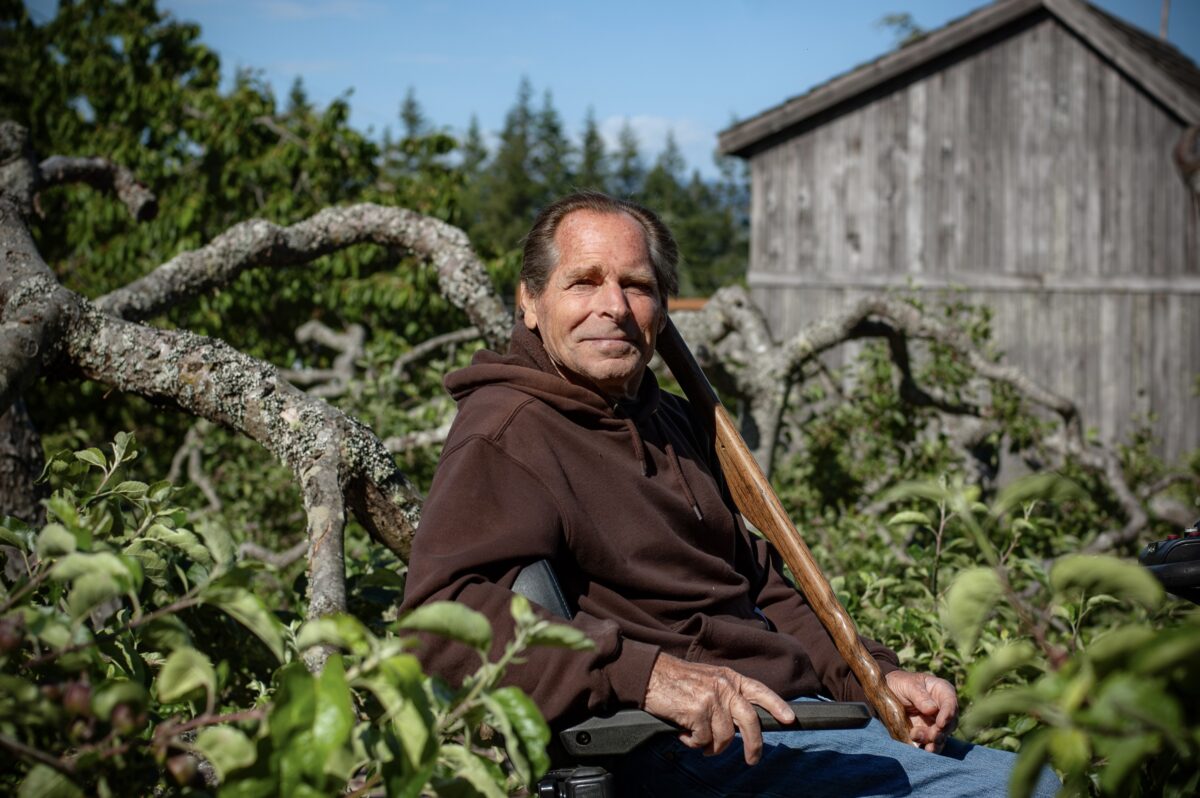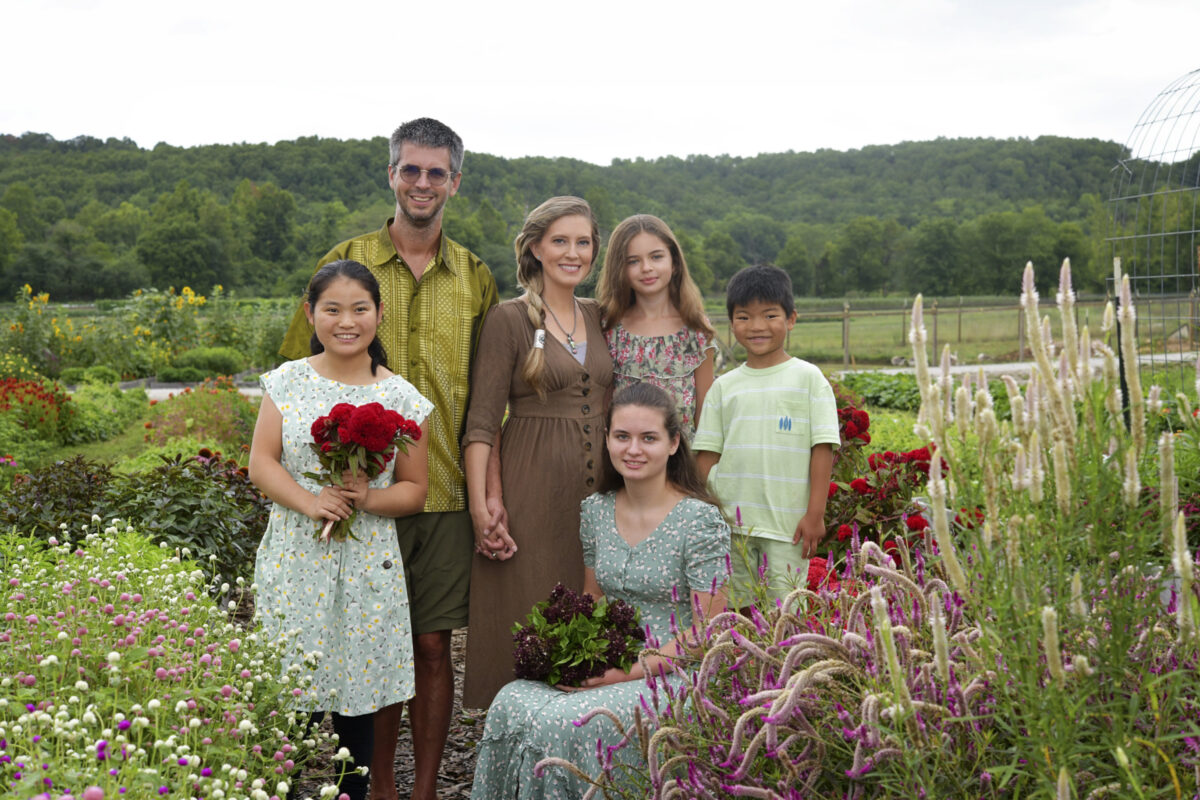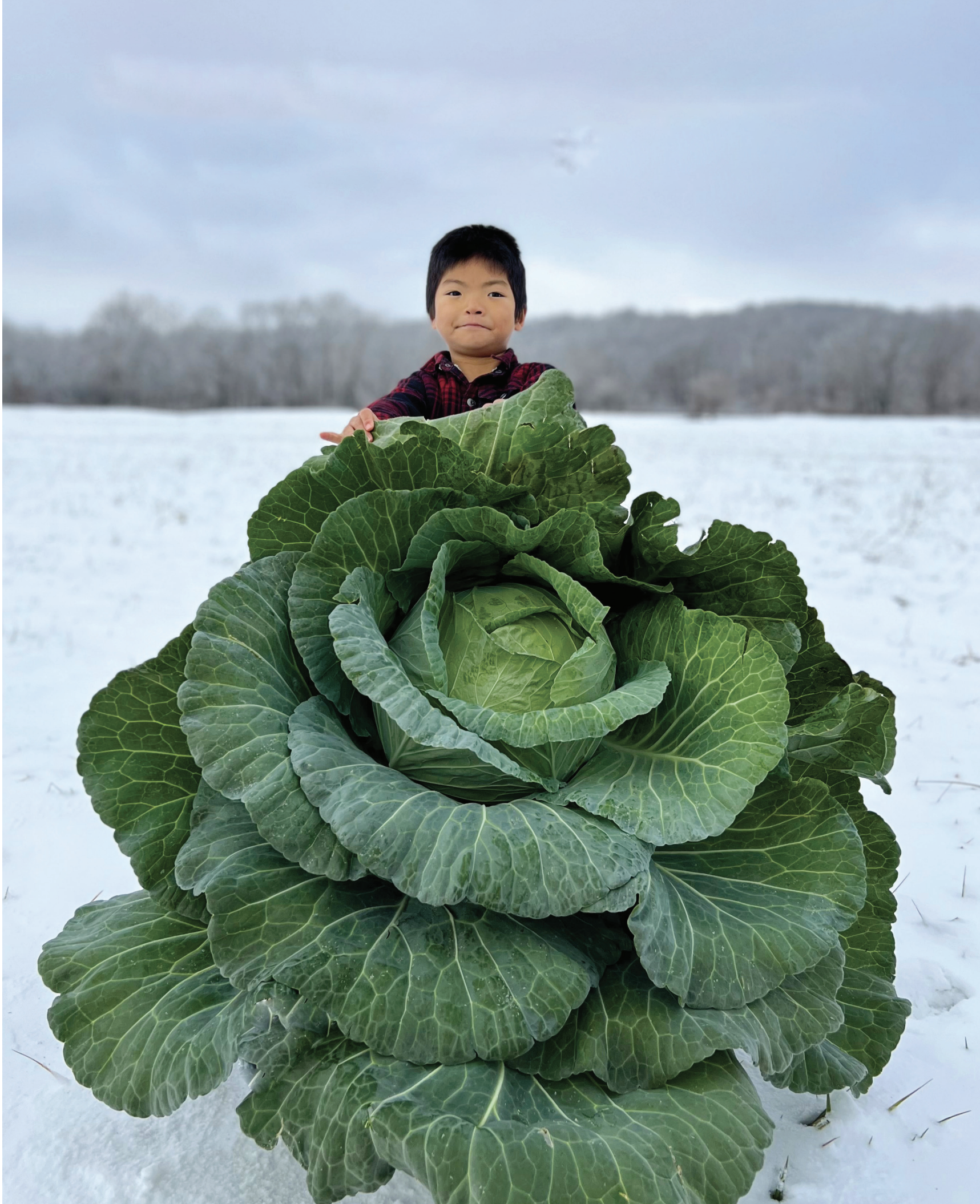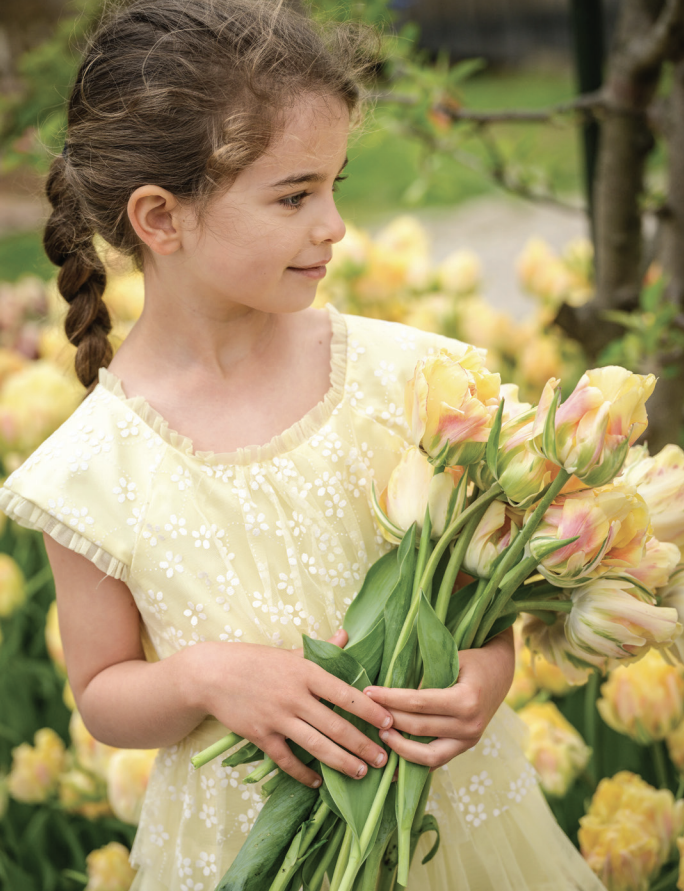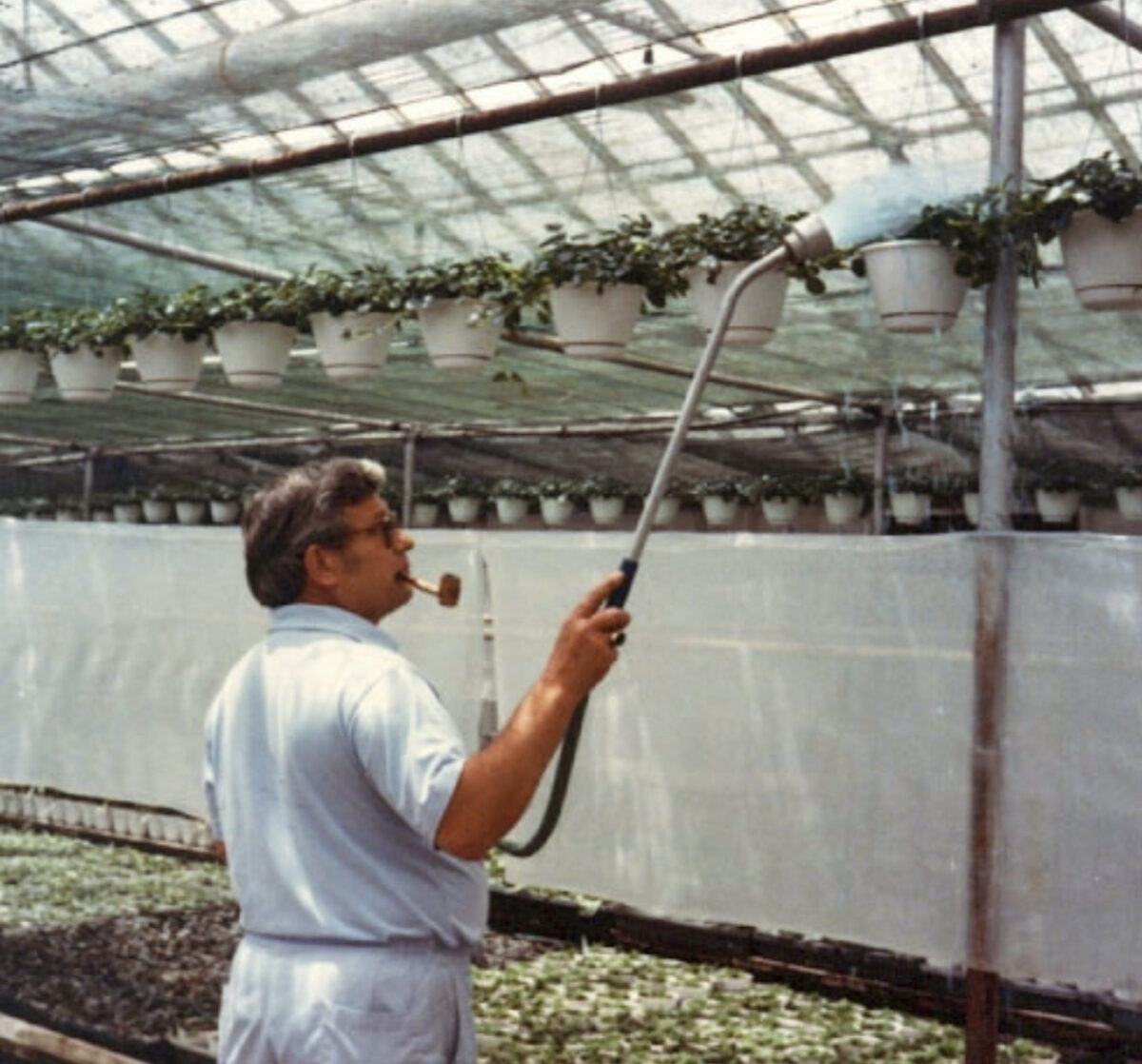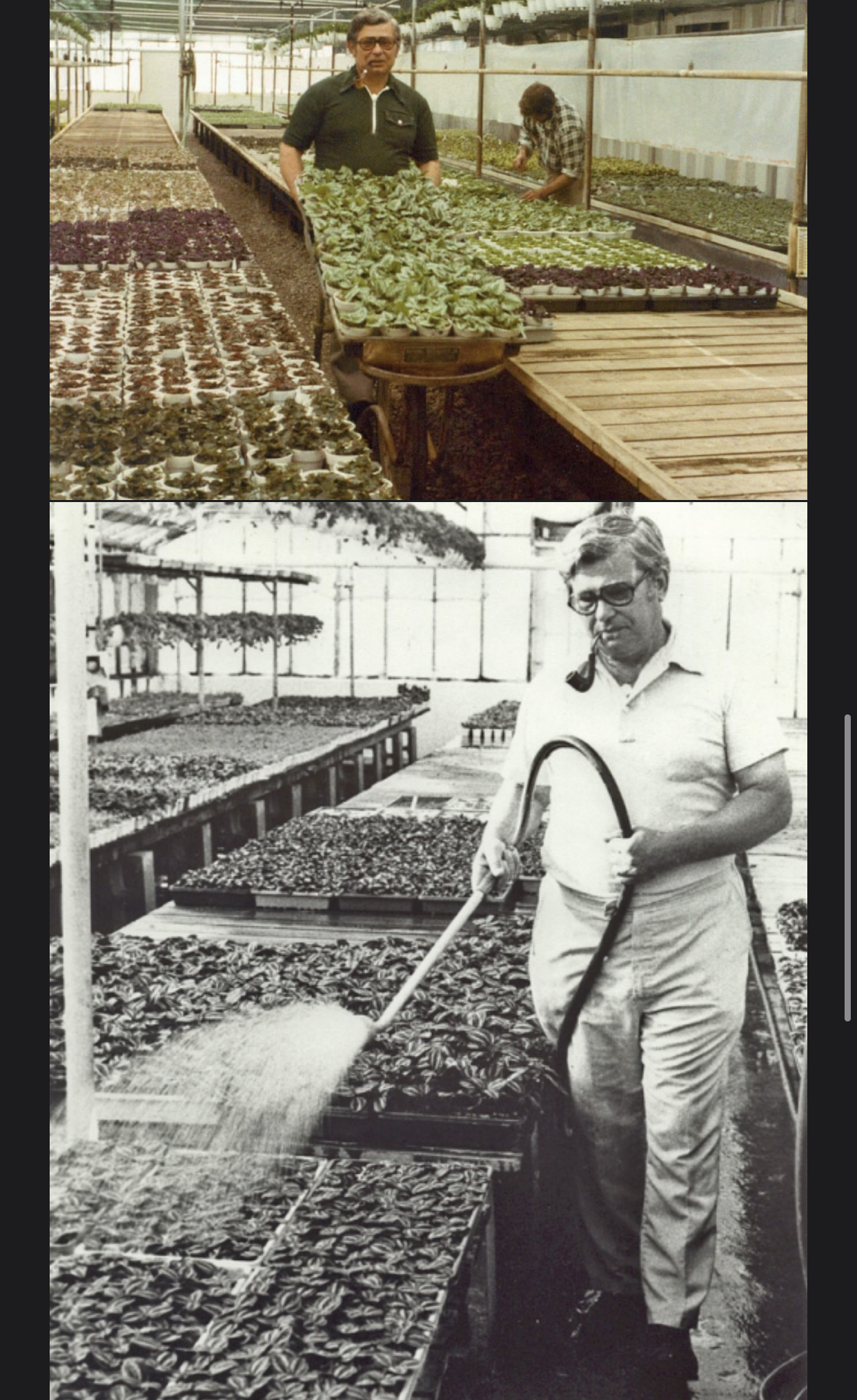Paul Gautschi would be the first to tell you that the food from his garden is the best in the world.
To prove it, he’d point to his apple trees. Unlike upright trees grown in commercial orchards, the branches of Mr. Gautschi’s trees bend so low they seem to scrape the earth in a submissive bow.
“When you buy an apple in the store, they’re featherweight. When I hand you an apple from one of my trees, your hand drops. They’re so heavy with water and minerals,” said Mr. Gautschi. “The weight of the fruit bent those trees like that. I had nothing to do with it.”
While Mr. Gautschi’s natural humility compels him to downplay his involvement in the quality of his garden, the fact is that the remarkable soil beneath his feet is the result of decades of dedication, observation, and faith.
And it all began with a lousy well.
Sacred Cover
Mr. Gautschi has always been a gardener. Growing up in Los Angeles during the 1950s, he and his brothers wore out shovels breaking up the heavy desert clay in their yard. This grunt work yielded plenty of vegetables and fruit for the family—and created a mindset in Mr. Gautschi that proper gardening meant lots of backbreaking labor.
In the late 1970s, Mr. Gautschi moved his young family to Sequim, a small city on the Olympic Peninsula in northwestern Washington state, with the goal of growing a garden large enough to feed the whole family. An arborist by trade, Mr. Gautschi found work pruning the region’s tree-filled neighborhoods and woodlots.
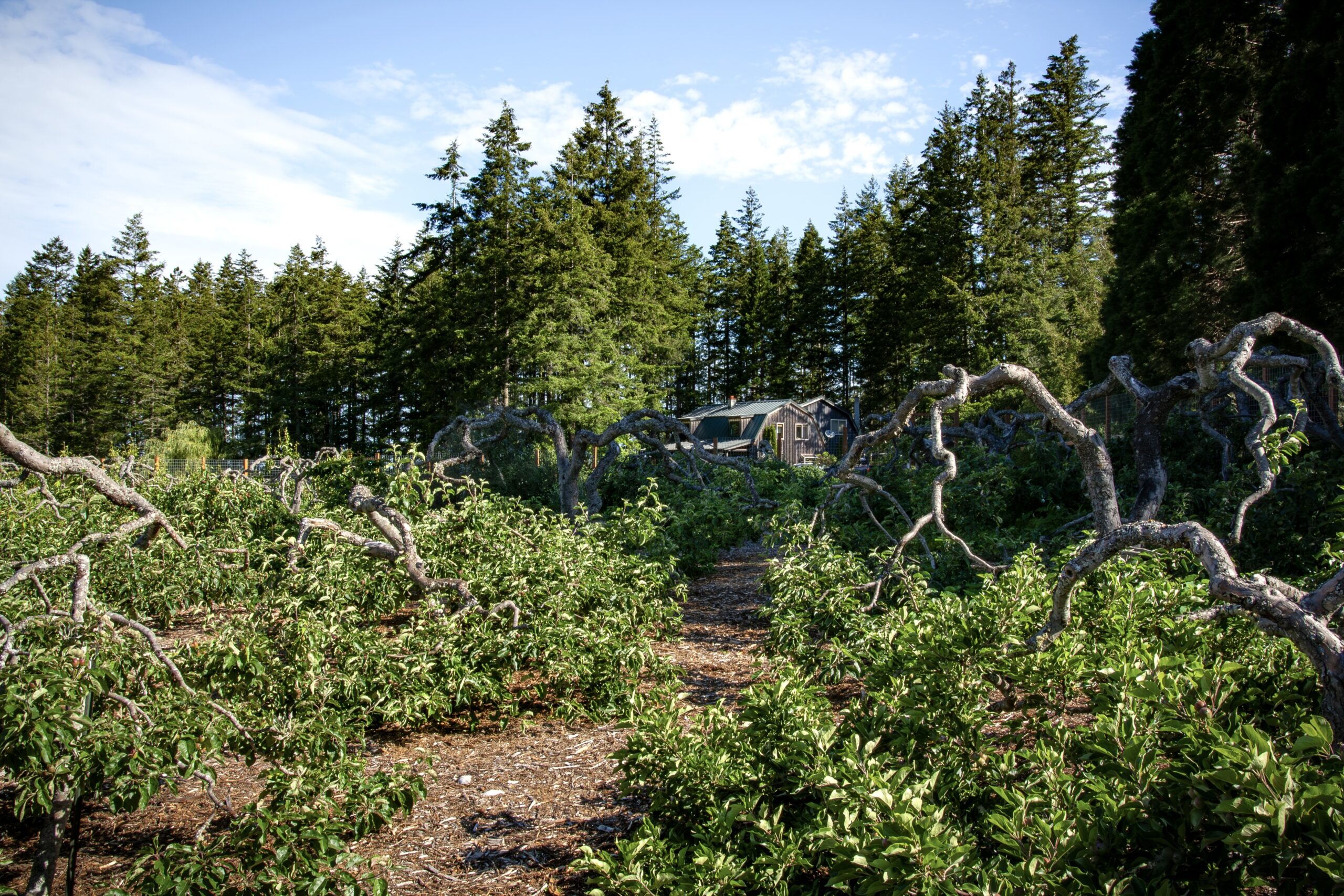
While building his home during the rainless summer of 1979, Mr. Gautschi discovered that his new, 213-foot deep well posed a problem. It produced only half a gallon of water per minute. That wasn’t enough water to irrigate a garden, let alone water his newly planted fruit trees. So, he turned to God.
He asked: “God, how am I going to grow anything without water?”
According to Mr. Gautschi, God instructed him to look around his property. He noticed that while his lawn was parched and yellow, the surrounding cedar trees were bright green.
“I went out to look at how everything in the forest was growing with no water. I realized it was all about covering,” said Mr. Gautschi.
The ground cover he saw on the forest floor was composed of the leaves and needles that had fallen from the trees during the fall. As the material settled into layers as the seasons passed, the lower tiers broke down into nutrient-dense compost. When it rained, water was retained in the compost and became inoculated with nutrients to feed the trees. Just as humans have skin, fish scales, and animals fur, so too does the earth have a protective and nourishing covering.
“By having cover on the ground, you have a constant source of [plant] food,” said Mr. Gautschi. “It turns out that poor well was one of the greatest gifts I ever got, because it opened me up to how nature works.”
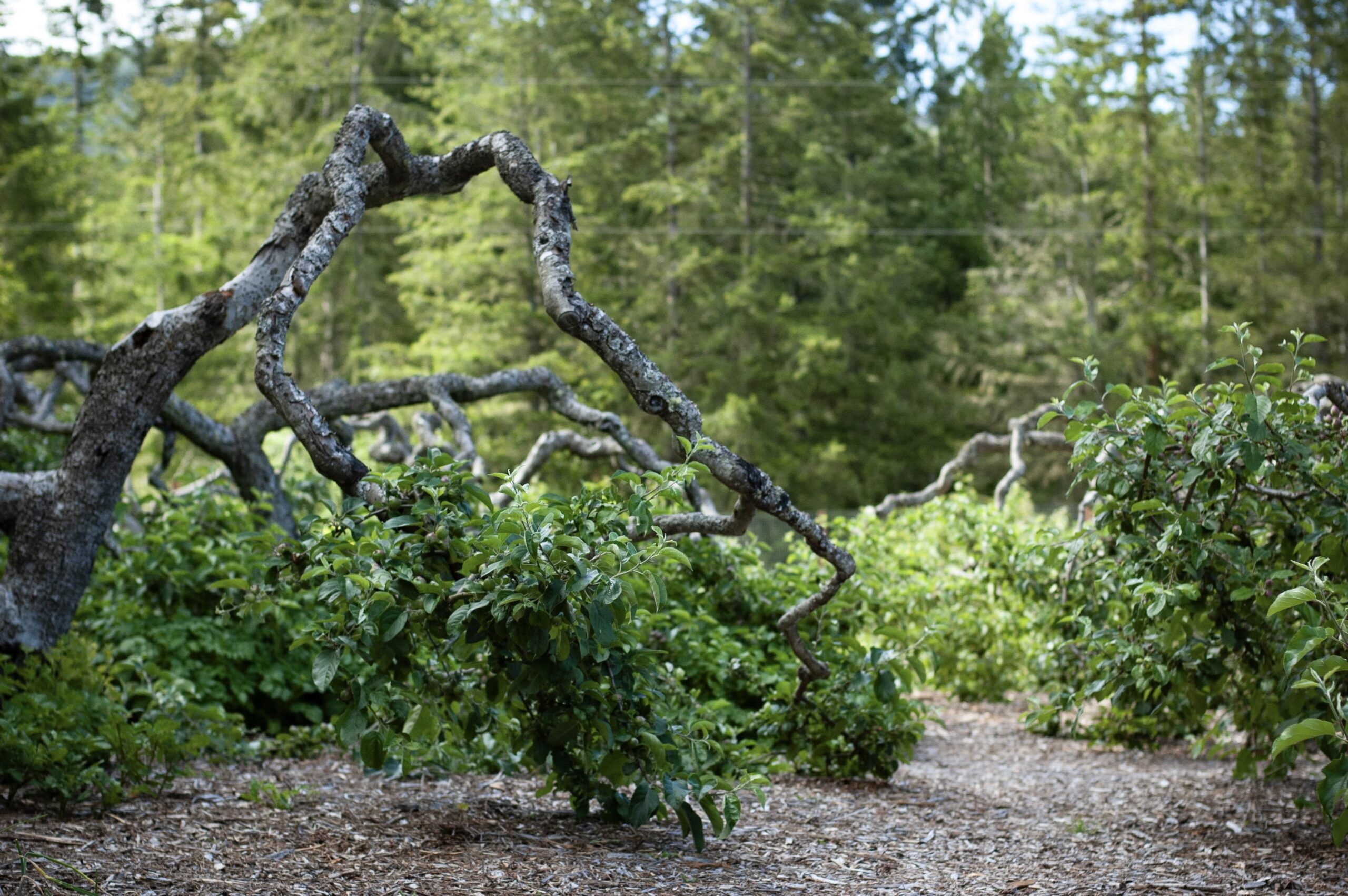
Changing Habits
Inspired by this divine guidance, Mr. Gautschi mimicked the forest covering by shoveling a thick coating of wood chips around his fruit trees. He didn’t yet think to apply the same principle to his garden.
As he had done in Los Angeles, Mr. Gautschi spent the next 17 years breaking his back to maintain his garden. Thick beds of weeds appeared days after tilling in organic fertilizer, and the compacted dirt quickly turned to mud in the rainy season. He wondered how he was going to keep up.
The orchard, meanwhile, was thriving. This frustrated Mr. Gautschi, since he only pruned the branches and laid down a new bed of wood chips every year. One day, he knelt down and moved the wood chips around with his hand. He was soon up to his elbow in beautifully moist, weed-free soil.
Enraged, Mr. Gautschi again cried out to God. Why had he been killing himself for years just to get a mediocre garden, while the orchard was thriving on no input?
He heard a voice say: “It works in your garden the same way. You just didn’t ask.”
Mr. Gautschi threw away his rototiller and immediately covered his garden with wood chips. In very little time, he began to see that the covering had the same effect on his garden as it had in his orchard. The once hard and compacted soil was now soft and buoyant.
“When I came here, my soil was really deficient, and the wood chips broke down really quickly. I had to keep adding them. Now, after so many years of being here, I’m not adding wood chips anymore because the soil is just beautiful and it’s not breaking down that fast,” he said. “It’s just amazing how nature works. When it’s satisfied, it’s not hungry. It’s really awesome.”
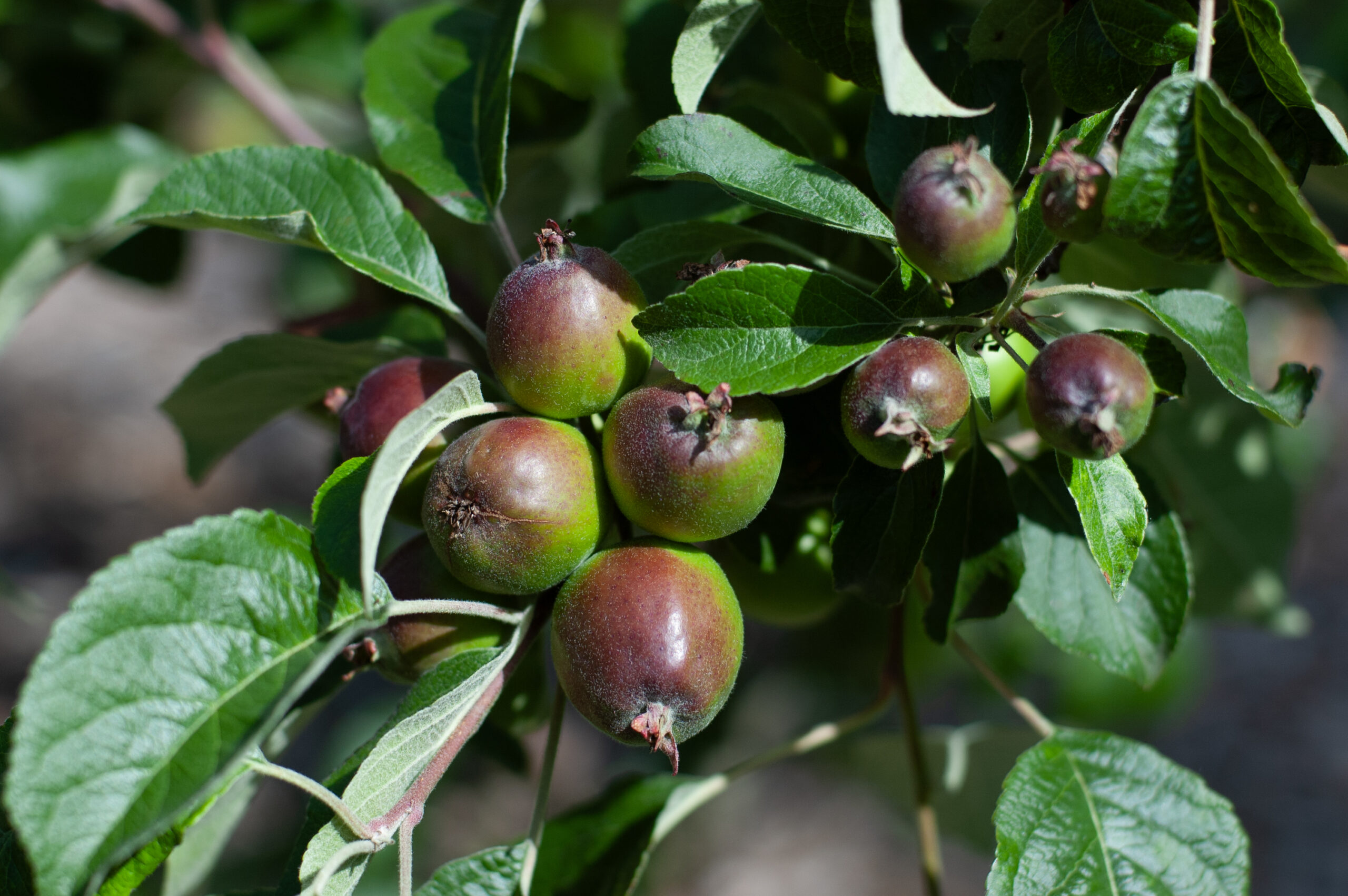
Thanks to the increased oxygen, nitrogen, and water retention, Mr. Gautschi’s soil had a perfect pH balance of 7, meaning it was neither too acidic nor too alkaline. Plants that traditionally can’t grow together—like lavender, which loves alkaline, and blueberries, which love acid—thrive side by side in Mr. Gautschi’s garden.
“It doesn’t matter what the pH requirement is,” he said. “Root development improves, too, because there is no resistance in the soil. I have dwarf trees with roots that come out in a 35-foot radius from the trunk, which is unheard of.”
Finding Eden
Though his garden’s growth was unprecedented, Mr. Gautschi made no efforts to advertise his success. The plot was, and remains, his personal garden. However, things began to change after his orchard appeared in a short article in a 1990 edition of Sunset Magazine.
From that piece, word of mouth began to spread about this man in Washington State growing enormous, abundantly productive fruit trees, all with no watering, fertilizer, or weeding. Soon, Mr. Gautschi found his property teeming with visitors, all eager to learn what he was doing.
“I was surprised, because it was nothing that I was hoping to do or planning to do. It just happened,” he said.
One of those visitors was a man named Michael Barrett, who had met Mr. Gautschi at a Bible study. Having grown up in a family of farmers, Mr. Barrett was curious to see Mr. Gautschi’s garden for himself. When he returned home and told his family of the amazing abundance he had seen, they encouraged him to preserve it on film. So, Mr. Barrett hired two young college graduates, Dana Richardson and Sarah Zentz, to make the picture. After 11 months of filming and editing, “Back to Eden,” was released for free online. It had an impact Mr. Gautschi never imagined.
To date, the film has been seen by more than 50 million people across 155 countries. Many of those viewers have traveled to Sequim as a kind of pilgrimage. To meet the increased interest, Mr. Gautschi began giving formal guided tours of his garden and orchard on Sunday afternoons.
“It’s incredible to me how far this has reached,” said Mr. Gautschi. He’s received phone calls and written testimonials from viewers in Europe and Asia, many of whom changed their diets and improved their health just by implementing his methods in their own gardens. For Mr. Gautschi, this success is nothing short of God’s favor.
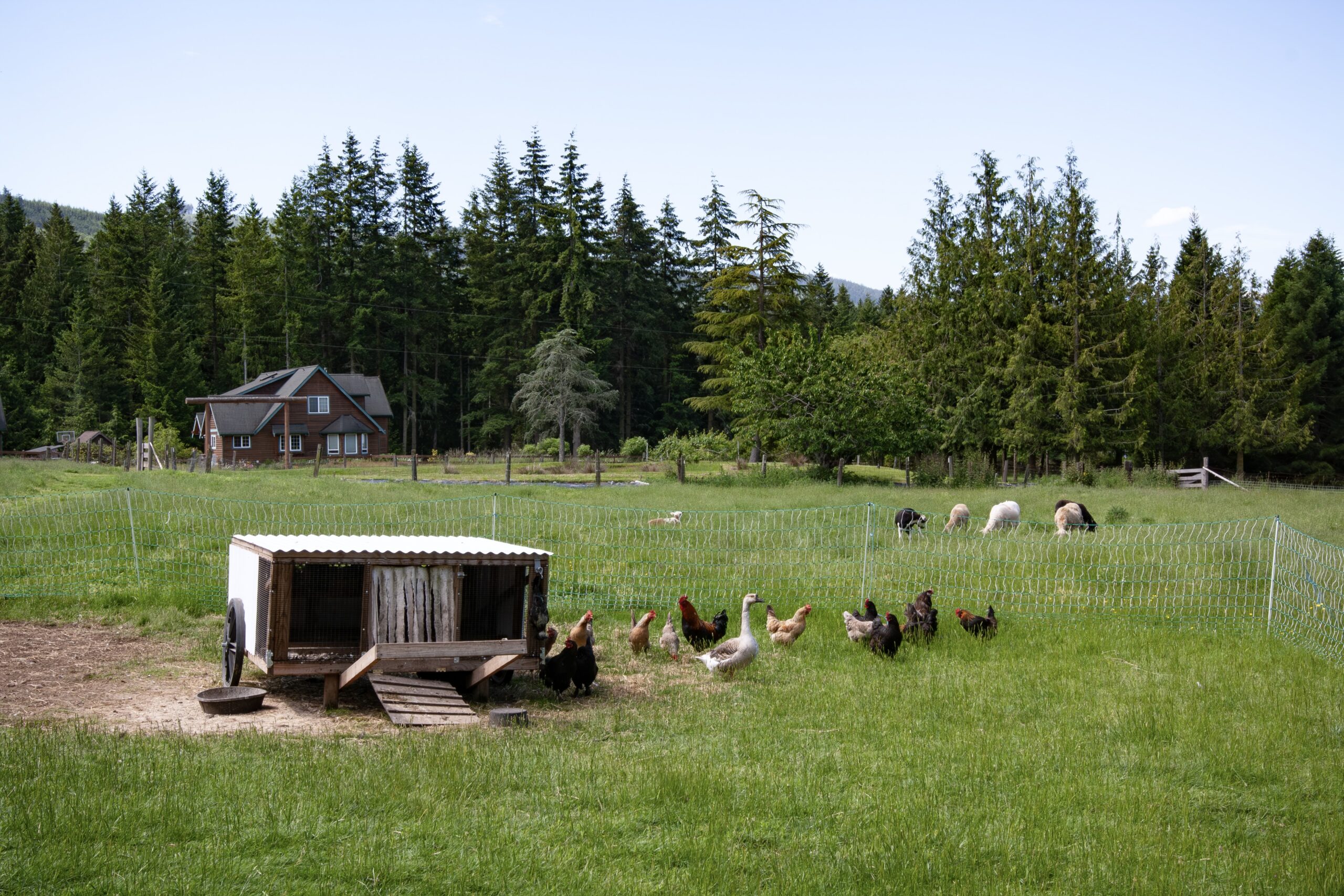
One early adopter of Mr. Gautschi’s method was Josh Thomas, co-founder of the popular blog and YouTube channel Homesteading Family.
“We came across the Back to Eden film not long after it came out. We became familiar with that quickly and employed the methods within a year of watching it. It was the best garden we ever had,” said Mr. Thomas.
His application isn’t exactly the same, due to the different climate and resources he has available near his homestead in northern Idaho. Mr. Thomas uses wood chips, but also adds animal manure for more nutrients and to recycle the waste from his livestock herds.
Though the lack of input is counterintuitive to everything gardeners are taught, Mr. Thomas’s success speaks to the efficacy of Mr. Gautschi’s methods.
“It really is as simple as he says,” Mr. Thomas said.
In 2021, Mr. Gautschi agreed to be filmed for a Back to Eden gardening class for The School of Traditional Skills, an online learning academy Mr. Thomas co-founded. When he arrived in Sequim, Mr. Gautschi greeted him as an old friend.
“Paul is Paul. You’re not getting one face for the camera and one for the side. We appreciate his heart for working with nature through a Biblical perspective,” said Mr. Thomas.
Easy Yoke, Light Burden
The simplicity of Mr. Gautschi’s garden has served him in ways he couldn’t have foreseen when he set down that first pile of wood chips. For several decades now, he has been losing his ability to walk.
Mr. Gautschi served in the Vietnam War as a soldier from 1968 to 1970. During his service, he was exposed to Agent Orange, a tactical herbicide the Army used to kill vegetation. Though he didn’t know it when he returned home, the chemicals were eating away at the nerves in Mr. Gautschi’s legs.
He can’t remember the exact date he realized. But he recalls he was out in his garden when a neighbor kid fell off his motorbike in front of his house.
“As I’m running across my field to go check on him, my legs start buckling. I’m thinking, ‘What’s this? This has never happened before.’ I realized that something was amiss. It’s just continued ever since,” Mr. Gautschi said.
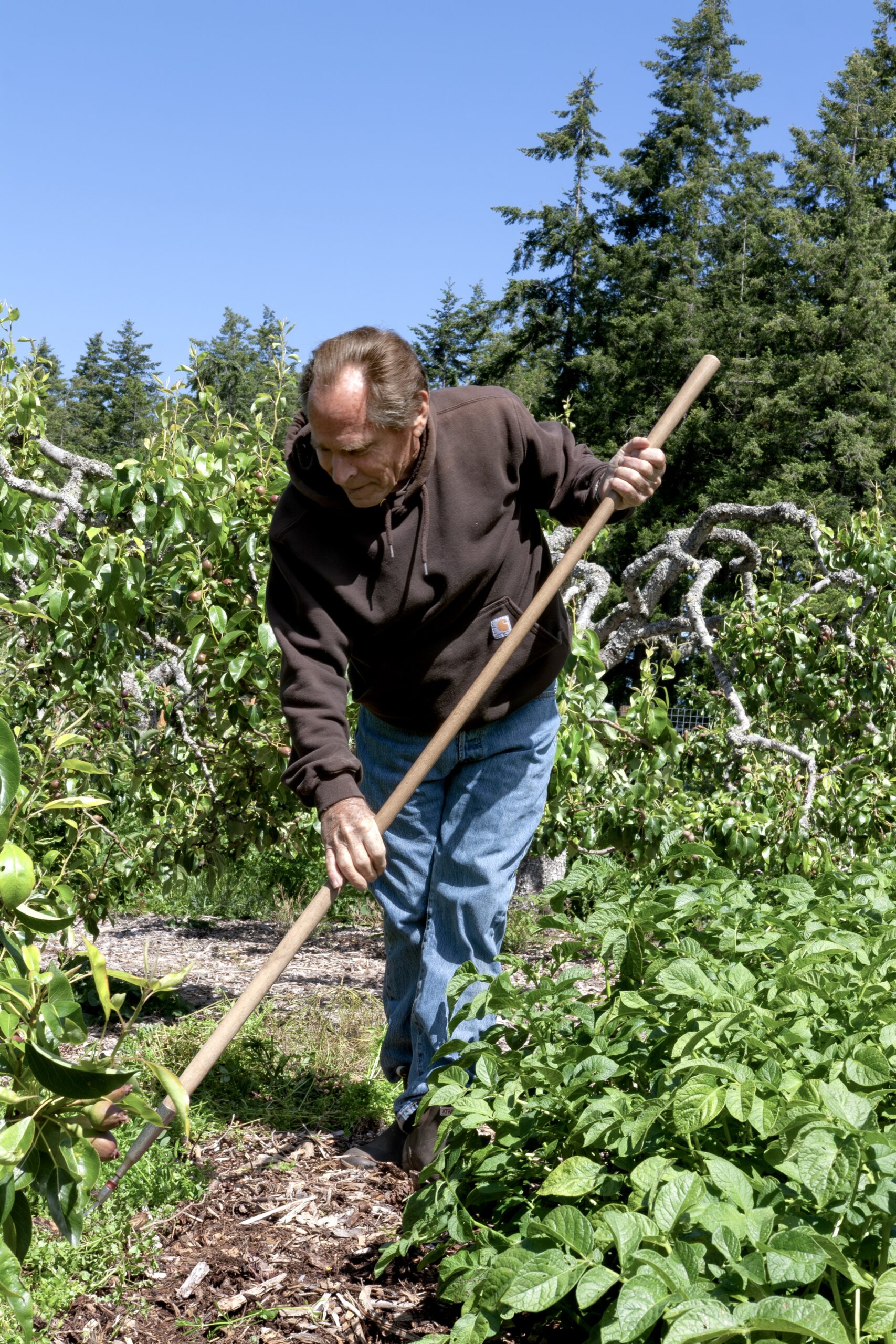
Today, Mr. Gautschi requires a wheelchair to access his garden and is no longer able to give his long Sunday garden tours—though visitors are still welcome. He can still walk, but his movements are slow, and he requires a staff or cane for support.
From appearances, though, you’d never guess there was anything out of the ordinary with Paul Gautschi.
“You do not see frustration. You don’t see pain. He’s not even wincing when I think there is genuine pain there,” said Mr. Thomas. “I think that’s just a reflection of his attitude and his heart. He can still get out there and run a row with his rake and get some seeds in.”
Those seeds become the “living food” Mr. Gautschi credits with playing a vital role in his good health.
“I haven’t been sick for 35 years. No cold, no flu, nothing,” he said.
He pointed out that vegetables start to lose nutrients as soon as they’re picked. “To go out, pick, and eat, as everything in nature does, is the ideal way to consume food.”
However, what truly amazes Mr. Gautschi is the stories of healing he hears from others. He was recently contacted by a man who had contemplated suicide. After watching the “Back to Eden” film, the man changed his mind. He implemented Mr. Gautschi’s gardening gospel and saved his family’s health.
“It’s amazing,” Mr. Gautschi said. “Gospel is just good news. And this is all good news.”
For more information about Paul Gautschi, and to watch “Back to Eden,” visit BacktoEdenFilm.com
From Sept. Issue, Volume IV

